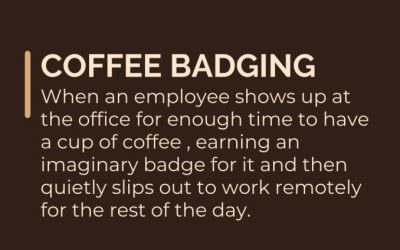With the latest amendment to the IR35 rules, there seems to be a lot of scaremongering going on amongst companies seeking contractor services. We want to reassure you there is nothing to worry about, it’s very straight forward.
On the 6th April 2020 the rules regarding IR35 determination change. From this date, the end client will need to provide a Status Determination Statement for all roles intended for a contractor. This change happened in the Public sector on the 6th April 2017. We implemented the changes at Langley James at that time and to be honest, with the exception of a few contractors initially disliking the decision the clients made, (the client has the final decision) we have experienced no further problems.
It’s not about the contractor, It’s about the role.
Any contractor from the 6th April will need to be given a “Status Determination Statement” which should be prepared when the role is scoped determining whether it is inside or outside of “IR35”. You, the client, will be obliged to present the recruitment agency and the contractor with the Status Determination Statement on each role. The statement is not a blanket company-wide statement, it’s on the specific role, so you will need to produce a new statement for each role. The Statement will clearly outline and explain the reasons behind the decision. so, as long as you show you’ve taken “reasonable care” to come to the decision, and also file the appropriate tax documents, say HMRC, you will avoid being penalised. IR35 isn’t a choice or preference, it’s a determination.
CEST Tool
The easiest way of doing that is by using the government’s own CEST tool, otherwise known as “Check Employment Status for Tax”. As long as you have answered the questions correctly about the role it will give you a determination. Ensure that you save and keep a copy of the determination in the event the case ever questioned in the future, this can be used as the “Status Determination Statement. That’s it, move on and hire.
Outside IR35 – The Contractors Preference
Contractors can choose to work on whatever they want however, as of April, they will be unable to determine the IR35 status of a contract themselves. Instead, they must decide if they want an inside or outside contract and apply accordingly.
A contract role can be deemed as outside of IR35 if a project requires a specialist professional with specific services, skills or equipment. The job must have a clear objective that, once achieved, will signal the end of the contract. Typically, estimated project delivery timescales, cost and equipment requirements will be expected along with contractual service replacement clauses to cover the client should the contractor fail to complete as expected.
You can build in timelines and drip feed the payment if you scoped the project to take 12 weeks you can pay a 12th per week, if it takes longer. In fact, it is similar to getting the builder in where you decide while he’s there to give him another job, on top of what you gave him originally. The contractor should also not be solely reliant on one source of work and ideally have multiple clients. However, to be truly outside IR35 compliant, a contractor undertaking the role needs to be exposed to financial loss if the contract project doesn’t work out.
Instead of fretting about IR35’s finer points, just start treating contractors like the external service providers they are and not as employees. Stop asking them to start work at 9am alongside your staff, try not to give them any equipment unless absolutely necessary and hold regular update meetings instead of trying to manage them.
Inside IR35 – Similar to a Temp
This applies to contractors who would be employees if it weren’t for the intermediary through which they work. To be truly self-employed, and for IR35 not to apply, the end client can not have Supervision Direction or Control over the contractor, so if you do, they will be “Inside IR35”.
If the role is deemed to be inside IR35, and your contractor is up in arms about it, discuss it with the Recruitment Agency (hopefully that’ll be Langley James!) and they will find you someone who will work within IR35. They will generally work with an Umbrella Company accredited by the Freelancer and Contractors Services Association (FCSA) and the recruitment agency should have carried out due diligence on the Umbrella Company.
Why the panic?
A genetically encoded fear of HMRC combined with the stubborn attitudes of contractors who know their roles are not really outside of IR35. Many of them have self-certified their roles outside IR35 and enjoy the tax benefits that come with it, however now it is up to you, the client. If deemed to be inside IR35 the contractor will have to pay tax like any other employee which has a significant impact on their lifestyles.
NB: remember Contractors are paid over and above their permanent counterpart compensating them for being temporary, loss of sickness, holiday pay, pension contributions, and both employee and employer National Insurance contributions as well as any other benefits their permanent counterpart would receive.
Will their rates need to be increased?
In short no. Naturally, they would love them to be but you are not obliged to increase them. Their rate hasn’t changed, instead just their taxation.
Who is being bullied?
You are. Contractors, especially those currently working with you, will pressurise Clients to classify roles as Outside of IR35, it has huge tax-saving benefits for them but puts you at risk should the role really be inside of IR35.
The message?
Don’t panic. Take control. Learn how to define your projects/roles and have the confidence to make the right decision. Properly defining the roles will give you the best choice of the right kind of contractors. Both Inside and Outside of IR35 Contractors have their place so, use them appropriately.
Further notes
What is IR35 Tax Legislation
IR35 is the name given to a tax legislation that is aimed at identifying individuals who are avoiding paying the tax that they should be. The IR35 legislation specifically challenges those people who supply their services to clients via their own company, often known as a ‘personal service company’, be it a limited company or a limited liability partnership, who, in the ever-watchful eyes of HMRC, should be classed as ‘disguised employees’. This basically means that HMRC do not recognise the contractor in question as ‘self-employed’ from a taxation perspective and therefore they should be taxed the same way that a permanent employee should be, thus falling insider what is called IR35.
April 2000
Was when the first piece of legislation came into force and is properly known as the Intermediaries Legislation. IR35 takes its name from the original press release published by the then Inland Revenue (now HMRC) announcing its creation
Chapter 8 of ITEPA 2003
The term ‘IR35’ applies to Chapter 8 of ITEPA 2003 (and originally the reference number of the original Inland Revenue press release), in cases where the contractor is in charge of determining his/her employment status.
Chapter 10 of ITEPA 2003
Chapter 10 of ITEPA 2003 provides the legal basis for the engager (‘client’) becoming responsible for determining the employment status of the worker in the public sector (from April 2017) and private sector (from April 2020).
Further reading
IR35: Time for the private sector to get its house in order?
CIPD – Off-payroll working rules from April 2020
Fines
The contractor will be fined, but if the contractor can prove they were put outside IR35 by the client, the client will be responsible for unpaid taxes and the fines below associated with it
- 30% of the unpaid taxes if HMRC finds negligence or carelessness about the IR35 status
- 70% of the unpaid taxes if HMRC finds you knew you they were within IR35 but ignored it
- 100% of your unpaid taxes if the IR35 status has been hidden.
Langley James is one of the UK’s best known IT Recruitment Agencies specialising in IT Support, Infrastructure and Software Development positions for all sectors and levels of seniority anywhere in the UK.










